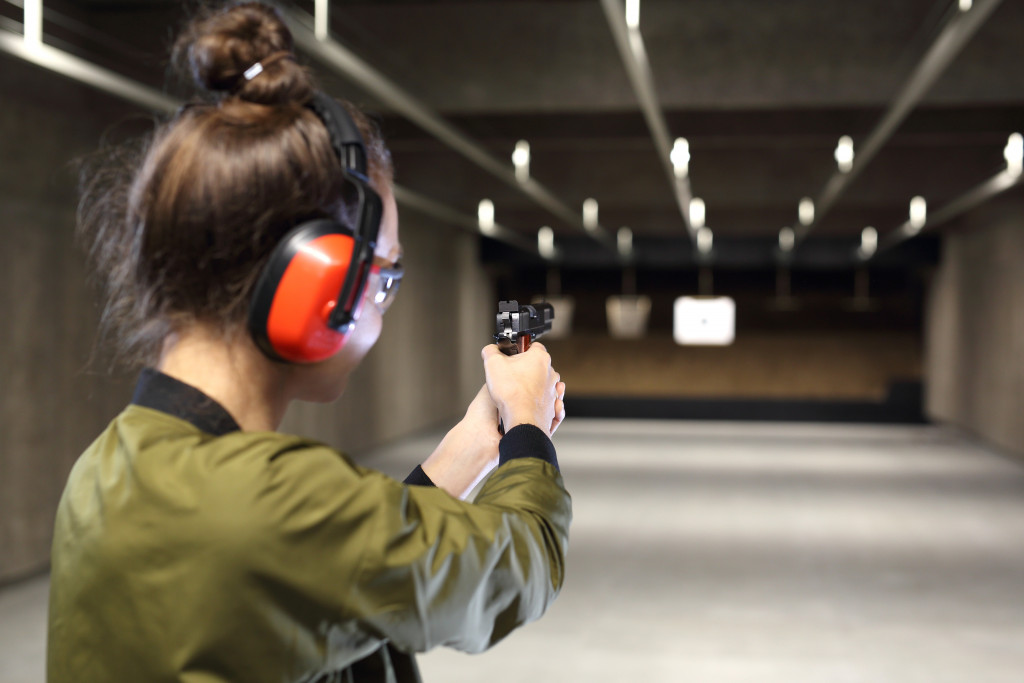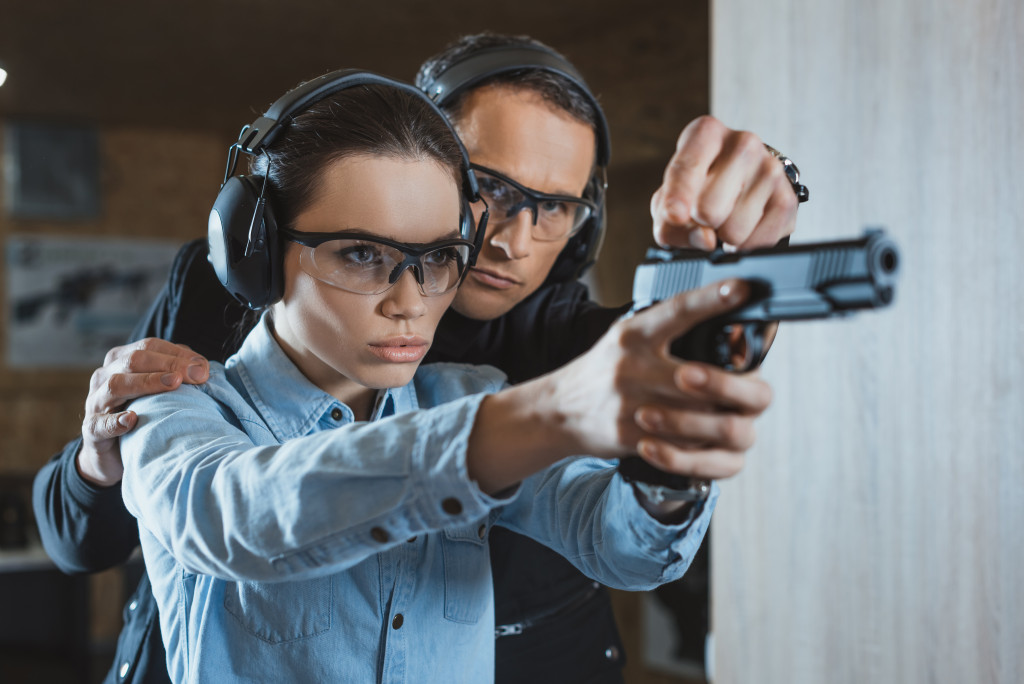Shooting ranges are controlled areas (indoor or outdoor) with all sorts of targeting mechanisms where people can practice shooting. Traditionally, professionals in training often frequent shooting ranges. But as recreational target shooting grew in popularity, enthusiasts from all walks of life have been coming through its doors.
Different shooting ranges across the United States now provide more value to their communities. Efforts such as toy or blood drives, fun zombie shooting, team games, or poker-style target competitions show people that shooting ranges are more than just a place to practice their marksmanship skills. Some ranges have also installed members’ lounges and bars. Others even feature simulators for the younger set and those who don’t like live ammo.
In this time of lockdowns and home isolation, there are more children at home. Parents might be taking this as a signal that gun know-how and safety are now necessary for protecting their home and their families. Gun range owners believe that the upswing in the shooting range business might have more to do with people seeking a controlled environment than just gun training and the desire to go out.
The Thrill of Target Shooting
Neuroscientists have studied how shooting firearms can trigger a natural fight-or-flight response in a person, particularly gun novices. Bodily responses may include sweaty palms, heightened heartbeats, and sometimes nausea.
But gun shooting can likewise flood the brains with feel-good neurochemicals, especially among seasoned sharpshooters and thrill-seekers.
The rush of blood induced by the body’s fight-or-flight responses has specific effects on brain function. There is an increase in mental focus and alertness to patterns. This increased flow of both conscious and subconscious processes makes it seem as though everything is moving in slow motion when it’s not.
After the feelings of danger subside, the body’s nervous system naturally releases different neurochemicals designed to calm the body back to its normal state. This natural ebb and flow of neurochemicals can induce pleasure in some individuals. This neurochemical overdrive might explain the rush of serotonin—mood-stabilizing hormones that bring about feelings of well-being—released after an exciting experience.
Is Firearms Training Necessary?
The rush of adrenaline and other neurochemicals during the act of shooting may cause feelings of anxiety among novice shooters. The objectives of firearms training are anchored to its primary goal: to help people overcome these aggressive sensations.
In society’s debates on gun ownership, proponents would instead focus on how guns can be tools for safety and self-defense, if used correctly. Gun proficiency and safety are also the objectives of effective firearms training.
Firearms training is necessary for people involved in the following fields:

-
Practical Shooting
Practical shooters train to prepare for any and all complex and challenging situations that may present in the future. Realistic conditions are emulated as closely as possible during this type of training.
-
Hunting
Precision target shooting is crucial to those who hunt, either for sport or for livelihood. Running boar target shooting is one of the more popular target shooting training for hunters.
-
Sports Shooting
Target shooting sports enthusiasts stay on top of their game by constantly practicing precision, unbridled concentration, control, and mastery. Target shooting for sport is a discipline that might date back to the 18th century and has only gained more popularity today.
-
Recreational Shooting
As this appeals to all ages, including the youth, it is an excellent opportunity to introduce gun safety. If you want more fun and want to lessen your live ammo use, sign up with a range that features interactive and high-tech indoor shooting range target systems. Often, these ranges offer systems that simulate live firing situations using digital targeting, including target projection and hit detection, among other features.
What You Need to Bring to an Indoor Target Shooting Range
In target shooting ranges, whether indoor or outdoor, rentals are typically available. Having personalized gear with you would be convenient too. If you’re looking to start a new hobby, here’s what you’ll need:
-
Gun Case
The safest way to carry your firearm is in a case. Consider this as gun range etiquette. Before you pack up your gun, though, ensure you unloaded your firearm and the action locked open.
-
Protective Goggles
Wearing proper eye protection prevents debris from getting in your eyes. Make sure that you have snug-fit goggles that meet Occupational Safety and Health Administration (OSHA) standards.
-
Hearing Protection
Gun ranges are loud, particularly indoor facilities. To avoid hearing damage, wear foam earplugs or earmuffs while shooting. You might also consider investing in high-end electronic headphones that cancel out the sound of gunshots.
Whether you are shooting for sport or necessity (or both), firearms training is imperative. Training not only hones your skills and mastery but is essential in instilling discipline, responsible ownership, and safe practices. It is also wise to read up on shooting range etiquette to complete your range experience.

